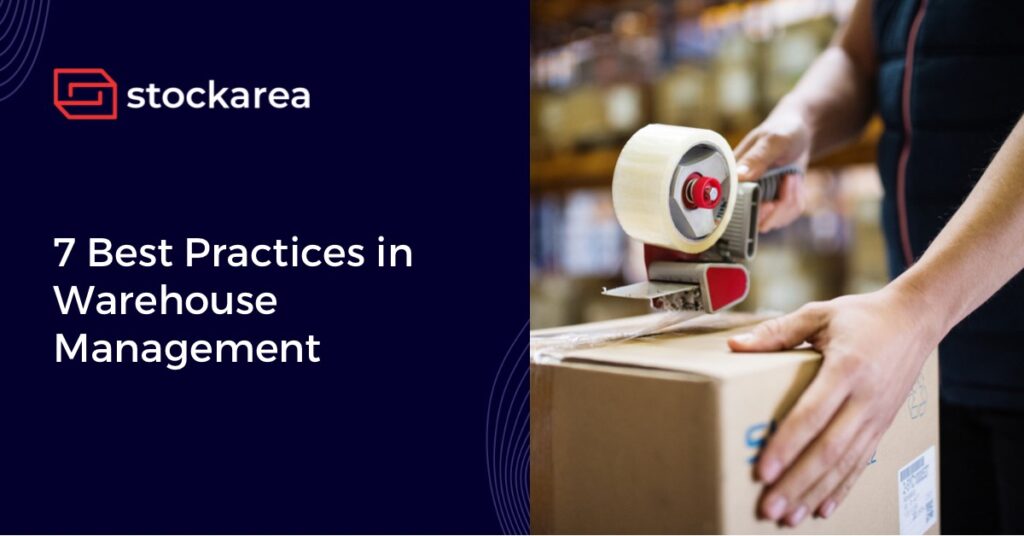Warehouse operations are critical to the success of any organization. To ensure that a business ships and receives stock in time to fulfill orders, it is necessary to have effective warehouse operations. By instituting best practices, businesses can save time and money, resulting in improved processes.
Here are the 7 best warehouse management practices that you can adopt in your operations.
1. Streamline data flow
Data integrity is crucial to ensure that a warehouse management process is efficient and accurate. Automation enables you to eliminate errors from your warehouse’s data collecting and analysis processes. Automatic data collection saves incredible amounts of time and significantly minimizes the possibility of inaccuracy. RF barcode and RFID systems can assist you in accurately and timely documenting product movements, allowing you to make more informed decisions in less time. Any step that can be automated reduces the number of steps required to manage.
2. Use a Warehouse Management System
Optimize your warehouse efficiency by implementing a warehouse management system. An effective warehouse management solution will consolidate orders to reduce travel time and increase efficiency and throughput during picking. It can link with your enterprise resource planning (ERP) or inventory management system to keep your inventory in sync – enhancing accuracy, lowering expenses, and increasing customer happiness.
3. Consider going paperless
Warehouse technology has transformed data entry processes, allowing data to be entered directly into digital storage and minimizing the possibility of errors caused by readability issues, lost paperwork, and other problems associated with the conversion of handwritten data to electronic bits and bytes. By eliminating the need for paper procedures, warehouse technology has decreased operational expenses since businesses no longer have to pay for paper, associated stationery, or the supply of pre-printed documents.
4. Automate return processing
Product returns are a natural and unavoidable element of doing business. They are occasionally inconvenient to deal with, but they are also inherently complicated for warehouse operations. A return management system tracks the returned inventory and the associated expenses. The obtained information assists in maintaining inventory control and gaining a better understanding of customers purchasing behaviours and preferences.
5. Plan picking process
While the manner in which you pick is entirely up to you, the procedure should be uniform and simple to follow. You’ll undoubtedly require a warehouse management system to assist with more streamlined picking methods, but you should already be picking in groups or waves rather than as new orders arrive. For example, individual items or cases can be removed from the pallet and placed directly into a shipment container. Not only does this expedite and streamline the process, but it also has the potential to boost client satisfaction and maximize your bottom line.
6. Real-time inventory tracking
By utilizing tracking and monitoring, you can determine where you placed a product, how to reach it, and whether it is ready for distribution. Real-time tracking enables you to see the location of things at all times and streamlines the procedure. This enables you to efficiently manage and assign destinations. Real-time inventory tracking also assists you in avoiding the accumulation of surplus inventory in your warehouses.
7. Implement Cross-Docking
Cross-docking helps businesses in an efficient warehouse space utilization. Cross-docking occurs when products are loaded directly from one transportation container to another, obviating the need for warehousing and storage. This eliminates the intermediary space consumption and enables speedy reloading of products. This is most frequently utilized for LTL shipments and is extremely effective for larger distribution facilities.
Related posts
- Warehouse Management System (WMS)
- 8 Key Functions Of Warehouse Management System (WMS)
- 4 Key Types Of Warehouse Management System (WMS)
- 13 Most Important Warehouse Processes
- 10 Practical Tips To Reduce Warehouse Costs
- 9 Key Benefits Of Warehouse Management System (WMS)
- Top 8 Features Of Warehouse Management System (WMS)
- 8 Best Inventory Management Practices
- Everything You Need To Know About A Bonded Warehouse
- 6 Major Benefits Of Bonded Warehouse
- Role Of Warehouses In Supply Chain
- Industrial Shelving and Racking Vendor Diversification Required to Manage Supply Chain Disruption
- 11 Best Warehouse Management Systems (WMS)
